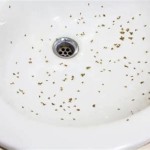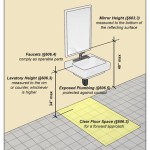How to Make Your Own Bathroom Vanity Units
A bathroom vanity is a key element in any bathroom, providing storage for toiletries and a surface for grooming. While pre-made vanities are readily available, creating your own can offer a unique and personalized touch to your space. Building your own vanity unit allows you to tailor it to your specific needs and style preferences, ensuring it seamlessly integrates with the aesthetic of your bathroom. This article will guide you through the process of building your own bathroom vanity, providing detailed steps and essential considerations to ensure a successful project.
Materials and Tools
Before embarking on your vanity construction, gather the necessary materials and tools. Ensure you have the following items readily available:
- Wood: Choose a durable and water-resistant wood like oak, maple, or cherry. Plywood is also a suitable option for the cabinet base.
- Hardware: This includes hinges, drawer slides, handles, and knobs.
- Sink: Select a sink that complements your vanity design. Consider factors like size, material, and bowl style.
- Faucet: Choose a faucet that matches the overall aesthetic of your vanity and bathroom.
- Paint or stain: This will give your vanity its final finish.
- Wood glue, screws, nails, and other fasteners: These will secure the various components of the vanity.
- Safety equipment: This includes safety glasses, gloves, and a dust mask.
- Power tools: This includes a circular saw, drill, jigsaw, and sander.
- Measuring tape, level, and pencil: These will be necessary for accurate cutting and assembly.
Having all the necessary materials and tools readily available will streamline the construction process, ensuring a smooth and efficient build.
Step-by-Step Construction Guide
Once you have gathered the materials and tools, proceed with the following steps to build your bathroom vanity:
- Design and Plan: Draw a detailed sketch of your vanity unit, including the dimensions of the cabinet, countertop, and sink. Consider the desired height and width of the vanity, the number of drawers and shelves, and the overall style.
- Cut the Wood: Use a circular saw to cut the wood pieces according to your plan. Ensure accuracy in your cuts, as this will affect the final assembly.
- Assemble the Cabinet: Glue and screw together the sides, top, and bottom of the cabinet. Use a level to ensure the cabinet is square and plumb.
- Add Shelves and Drawers: If incorporating shelves or drawers, measure and cut the wood pieces for each component. Install drawer slides and assemble drawers according to instructions.
- Attach Doors: Mount hinges to the cabinet doors and attach them to the cabinet frame.
- Build the Countertop: Cut the countertop material to fit the vanity top. Ensure it overhangs the cabinet sides for a finished look.
- Attach the Sink: Install the sink according to the manufacturer's instructions. Use a sealant to prevent leaks.
- Mount the Faucet: Install the faucet according to the manufacturer's instructions. Connect the water supply lines.
- Finish the Vanity: Sand the entire vanity unit to create a smooth surface. Apply paint or stain to achieve the desired finish.
- Install Hardware: Attach handles and knobs to drawers and doors.
- Final Touches: Install the vanity in the bathroom and make any necessary adjustments.
Following these steps carefully will help you build a sturdy and attractive bathroom vanity that will serve you well for years to come.
Tips for Success
Building a bathroom vanity is a rewarding experience, but it's important to keep a few things in mind to ensure success:
- Measure Twice, Cut Once: Accurate measurements are crucial to avoid mistakes. Measure twice before cutting each piece of wood.
- Use Quality Materials: Investing in quality wood and hardware will result in a long-lasting and durable vanity.
- Take Your Time: Don't rush the assembly process. Take your time to ensure each piece is properly secured and aligned.
- Plan for Drainage: Consider the drainage system for the sink. Ensure the vanity is properly plumbed and that the drain is connected to the plumbing system.
- Seek Professional Help: If you're not confident in your DIY skills, consider hiring a professional to assist with the construction or certain aspects of the project.
By following these tips and investing the necessary time and effort, you can create a beautiful and functional bathroom vanity that complements your style and enhances the overall aesthetic of your bathroom.

How To Diy A Bathroom Vanity Unit Wood Create

How To Diy A Bathroom Vanity Unit Wood Create

How To Diy A Bathroom Vanity Unit Wood Create

How To Design Bathroom Cabinets In Just Five Steps

A Quick Guide To Bathroom Vanity Units Luna Spas

How To Diy A Bathroom Vanity Unit Wood Create

How To Build A Floating Vanity Unit Victoriaplum Com

How To Build A Floating Vanity Unit Victoriaplum Com

Ideas For The Best Vanities Your Bathroom Hometalk

Can You Use Kitchen Cabinets For A Bathroom Vanity Nashua Home Design Center







